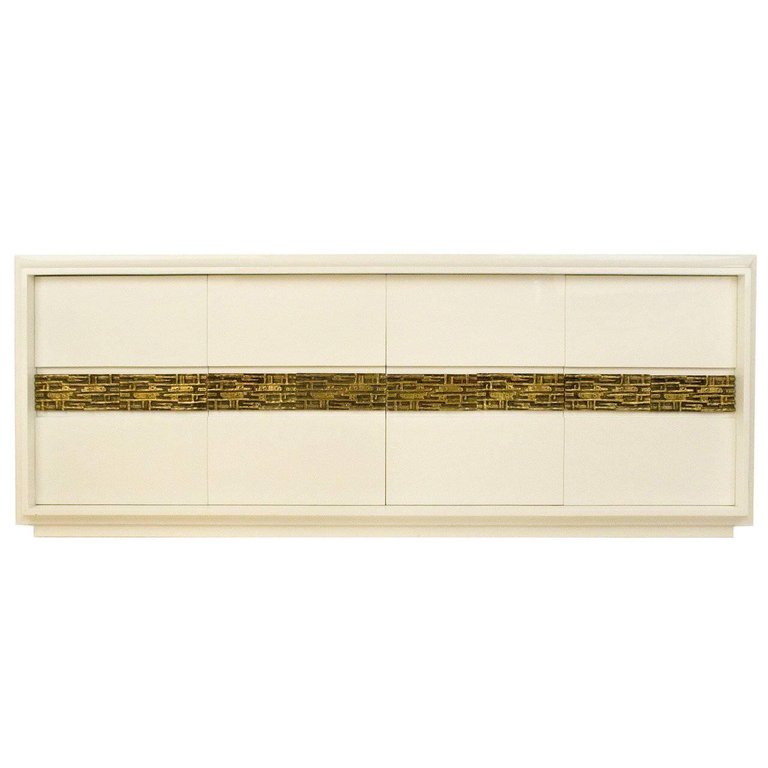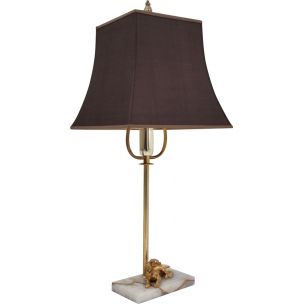Perception of an architect/designer is strongly affected by what stage of that architect's/designer's career one first experienced him in and what stage of one's own life one was in.
I first noticed Frank Gehry's buildings in the early 1980s, when he was still not hugely famous, and I was still not hugely old. 🙂 I used to see one of his houses (or was it a duplex, can't recall now) in the Venice community of Los Angeles. It had the then relatively new and already signature chain link fence and corrugated tin look that got him noticed and liked among the ironically cool in Los Angeles.
If you know LA, especially the beach neighborhoods with their endlessly bland and tacky blown stucco residential structures dating mostly from the 50s, 60s and 70s, you would understand why he was such a breath of fresh air back then. He created some fresh visual character and idiosyncratic attractiveness that seemed quite authentic to LA, the world's only truely modern, horizontal city that I know of, which makes LA pretty weird to start with.
Gehry's tiny building stood out amidst the visual conformity and decay that was then Venice, much the way a Wright building probably stood out in early 1900s Chicago sans the decay.
Both Gehry and Wright could build buildings that were not only strikingly different, but IMHO a significant improvement over what was already in the neighborhood.
On Gehry..Pt.2
Now, I'm not saying Gehry's early buildings were as wonderful as Wright's early buildings, or that Gehry is the equal of Wright, but given the visual starvation in places like Venice in the early 80s, where Gehry worked, well, his buildings made almost as big of an incremental visual improvement as Wright's early ones probably did in Chicago. Again, you'd have to know Venice of that time to see how I could say this and likely not all would agree with me even then, but I'm talking here about MY first experience of Gehry.
Also, Gehry's early work had a sincere irony that anyone could grasp in LA. His early buildings were kind of the architectural equivalent of Kevin Costner's early film acting efforts, which were cool to film industry insiders for their consciously sincere irony as well. People out in the multiplexes in Peoria often didn't get what Costner was up to and so called him just another handsome hunk, but if you watch his early work, at least up to JFK, you'll see what I mean. I tended to view Gehry's early buildings the same way. Something is going on here that is combining niceness with an evil-threatened context that produces what we used to call sincere irony.
Venice was afterall a high crime area that certain cool movie and arts people liked to hang in even though they could afford much better. Venice was very indicative of the weird sensibility of the early 1980s LA, when the haves and have nots began to massively diverge under Reagan, when there was rapidly rising crime and drug addiction, and when third world scale homelessness and poverty overwhelmed LA. Excruciating poverty and homelessness have always plagued American cities, and LA, as well, but it had always been sort of contained to "those" neighborhoods aka the ghetto. By the mid 1980s there were areas of LA south of downtown that were more densely populated than the teeming immigrant ghettoes of New York in 1900; that was documented. The horrendousness of the change was beginning to be felt by everyone who lived in LA, not just by the poor folks in Watts and East LA barrios who had wrongly suffered such indignity and violence for a long time. Everyone has to drive everywhere in LA and so you just couldn't avoid it.
On Gehry..Pt.3
LA was beginning to be seen as not just a vast suburban wasteland who's only cultural contribution was right turn on red (to borrow from Woody Allen), but as a menacing portent of a Reaganomic fascist future. Choppers with spotlights beaming and blades whompa-whompa-ing in the night like something out of Apocalypse Now made even the better parts of twon seem like a war zone. Gangs in cars on the ground suddenly started selling Colombian crack transshipped from Panama and rerouted from Miami (rumors were someone supposedly gave the word to rip LA apart for political reasons) to south central LA in vast quantities. The stuff was rumored to be off-loaded on major ships in the Port of Long Beach with the blessing of someone high up, but no one ever brought charges, so who knows? Sirens and gun fire and choppers chasing junkies through back allies were not just something on the evening news, but something you could see and hear and watch from much of LA proper and even some West side neighborhoods fronting on the Santa Monica Freeway, where the good life seemed always to have reigned unpenetrated. All this Chopper whompa-whompa and the sirens and the gunfire gave the city with the Meditteranean climate and the sunny disposition a dark tincture even in broad daylight. Movies and albums like To Live and Die in LA surfaced. Soon the unintelligible gang graffitti spread everywhere; then the barbed wire began to be strung over the freeway overpasses (yes, the east coast cities had had their barbed wire and graffiti for a long time, but not LA! Not over the 405! what was the world coming too?!). Free way shootings became de rigeur. And sometime there Blade Runner and Terminator came along and catalysed the whole period into an indelible pair of nightmare visions that had scenery that in fact was not that far from what it looked and felt like when one was young and trying to make it in LA at that time.
On Gehry..Pt.4
And over here in Venice was some architect, one of our own, out throwing up a few weirdly ironic small houses and apartments--probably rehabs, I don't remember--that took the whole nightmare landscape and sort of inverted it, turned it inside out, if you will. In effect, those early chain link fence and corrugated tin structures with the pastel colors said, "Been through hell, came out the other side, and, you know what, LA is going to keep on keepin' on even though everything IS different." Or as Randy Newman sang: I'm gonna ride it till I just cain't ride it no more. It was kind of invigorating in an honest sort of way to see one of his buildings that so openly admitted what was going on in the City of Angels, while so many tried to live in denial. Rather than pandering the Mediterranean red tile look to Yuppies, or pushing the then moribund geometric modern look, or even adapting this weird new eastern, painfully Presbyterian, post-modern look, he seemed to give post-modern an LA spin that anticipate the tech noir we all felt was coming, rather than complexity and contradiction filtered through Martha's Vineyard.
Gehry's buildings, though they never became a dominant architectural style, felt quite authentic to the times in LA and it seemed to generalize a bit, because other American cities seemed to be going through, or headed for such tech noir, nightmarish transformations.
On Gehry..Pt.5
It may be hard for persons younger than 40 to understand, but while America's cities have been in serious decline since the 1950s suburbanization process, and were wracked in certain neighborhoods by race riots in the 60s, American cities outside the ghettoes were hard, tough places that still in 1970, say, had some social fabric left that had yet to be utterly wrended, crushed with third world levels of poverty and homelessness, and riddled with gang violence from Dusk til Dawn, to borrow from Quentin Tarrantino, an LA film maker largely formed in this frankly ghastly period of violence in LA.
So: I found Frank Gehry when I was still a bit young and at a time early in Gehry's career; when he really, really spoke to me on a gut level about where I lived and what I and my adopted city were going through. As a result, I am very fond and trusting of Frank Gehry's humanity and comfortable with his experimentations. He is in a way like a war buddy of mine. In the crunch, when the bullets were flying, I know he was extremely authentic to that moment, when others didn't seem to be and when he probably had a lot to lose being that way.
But like all war buddies (no I never met him), we have gone our separate ways and changed alot over the years. And again like all war buddies, we do not always believe in or understand what the other has done in our lives after the war. But still there is that bond of respect one has when someone performed under pressure once and it is a bond that makes you give that guy the benefit of the doubt until he completely !@#$%s up.
I give Frank Gehry alot of credit for reintroducing the socially relevant metaphor, or perhaps the allegory, to modernist/post modernist architecture. I don't think anyone has done a more remarkable job of profoundly commenting on the contemporary state of first LA society, then American society, and recently Western society, through his buildings than has Frank Gehry. And I do think that at least some modernism/post modernist architecture IS supposed to pack a social message and sensibility that comments on society as it is (not just on how it ought to be), as well as make functional architecture that improves upon the aesthetic standards of what is around its site. I think Frank Gehry's buildings have done that in every case that I can think of.
On Gehry..Pt.6
I'd like to take a moment to comment on Bilbao, because that seems to me, visually at least, his most adventurous and longest stretch into the unknown of contemporary architecture, and his most jarring fit with surroundings, and to that point, most provocative comment on western society. Bilbao represents to me a remarkable achievement. It seems to me that he has done for Bilbao AND western society in a landmark building what he did for Los Angeles in his tiny Venice structures. He held a mirror up to a morphing world caught up in a scary, often chaotic shapeshifting world full of economic and political and social wrending and dared Bilbao and the western world to look at what was happening to it. Maybe it commits the immitative fallacy of doing to Bilbao what it implies is happening to the rest of the West (Wright's Guggenheim can be accused of the same), but to me Bilbao is a functional art museum (which the Guggenheim never was) with a glass skin and a form that appears to be simultaneously caving in and reconstituting itself in some kind of terrible, beautiful specatacle with an uncertain outcome. How much more authentic of a message could Gehry have given Bilbao, or the West--both at the time the building was designed and later time when it was sited and built. This message and the form that expresses it speaks to me and seems to me to have the same kind of perfect pitch of the moment for the West that his little Venice buildings had for LA so many years ago.
Now, I know many DA professionals can criticise him honestly for the environmental dubiousness of glass skinned architecture, or for the potential transcience of the form language he used in Bilbao, or back in Venice, and some can no doubt forecast more accurately than I about how his buildings will age aesthetically, but the war buddy and laymen in me says this: Gehry's buildings have spoken to me twice about the world I lived in--once when I was young in LA and once again when I was getting old and more a citizen of the world than I was then. Both times, Gehry held nothing back. Both times he told a world something that it needed to know. Both times, he did so in a somewhat shocking way, at least at the time. Both times he was right IMHO. Both times he revitalized interest in architecture and challenged what it meant. Both times he took great chances with his professional career to speak clearly and authentically to the issues of his time as he saw them. For these reasons, he is to me the most admirable and important American architect between 1980 and 2006.
On Gehry..Pt.7
And yet having said the above, I am also comfortable with saying that so far, he has not yet evidenced the heights of beauty of a Wright and likely never will. Frank Gehry is not an architect of the profoundly, coherently beautiful. He is an integrator and harmonizer of dissonance into something one can live better and with more insight with. As an artist, he says to me this is the best we can hope for in contemporary architecture, if it is to be authentic to our time, given the eclectic, torqued, reinstituted, globalizing, contradictory (at once highly situational and highly routinized by technology way of things) and too-alienating world we live in today. Frank Gehry seems to be daring everyone, architect and layman alike, to prove him wrong. Go ahead, he seems to be saying,try to return to a noneclectic formal language, to a nonallusive message of the unbroken tradition and utopian possibility, try and do it and see if it comes out authentic. He seems quite certain that it won't. So far, no one has proved him wrong yet, at least on the scale of a Bilbao.
Someday, when times change, perhaps we are even already there, I don't know, but someday, some great architect WILL reconnect with the deep tradition, and he or she will achieve once again a harmony of great beauty and humanity and the world at that time will no doubt be the better for it. But for now, I think, Frank Gehry can look himself in the mirror and say he did the best he could for society, and that was probably the best that could be done, given the times, and that was damned good.
I am amazed...
by the level of insight of someone that always claims, and probably rightly so, that he is a layman in design and architecture. I am grateful for this contributon because it situates Frank Gehry in a place we never thought he belonged: in Kenneth Frampton's critical regionalism. I am also amazed by the fact that this clear description of the context in which Gehry's architectural language is socialy and culturaly relevant is consistently absent in those articles and books I have read and the documentary discussed in the other thread. It leaves me wondering to what extend I could and should have made the connection myself. In spite of living in almost opposite conditions we are, after all, not completely ignorant about LA and the living conditions in other american cities. This being said, the remaining questions are: To what extend is architecture the proper media for expressing one's emotional reactions and comments on the the stae of our urban societies. I can only hope that we will keep this question for a long time to come. The other is: If the architecture of F.G. is this deeply rooted in the expanded "Venice,LA" culture, how appropriate is it to provide every living city with it. For some time I compared the "wonder" over Bilbao with the imaginary one that would be felt after the landing of a space ship, and I honestly thought that much of the interest and the spectacular amount of visitors was due to that "landing out of nowhere" effect. I know better now, but dcwilson puts me back on that track. It will be interesting to see what his architecture will do in the Brooklyn project
http://www.metropolismag.com/cda/story.php?artid=1838
Gehry's career seems nonlinear IMHO...Pt.1
and so what he will do next is perhaps a little more unpredictable than some other good architects.
A part of him is quite the Bauhaus modern purist, as one of his apartment complexes somewhere or other proves. It surprised me, since I only knew his postmodern stuff before seeing it. I think few people know he has worked in such a traditionallly modernist form language, or guess that he is still fond of it, given the spectacle of Bilbao.
At the same time, he is capable of post-modernizing Bauhaus form language and this is what he was known for before Bilbao.
Bilbao, of course shocked everyone with a move into curved forms in dynamic collapse and reconstitution. I think people's eyes were so focused on the curved forms and their dynamics that they overlooked that he was, to my way of thinking, working quite well within the modernist tradition that is common to painting and sculpture, but which has less often been seen in large buildings. I see bits of cubist dynamics in Bilbao's (and the LA hall) composition, though because of Bilbao's curves, it might be more fitting to say Gehry moved from cubist to "curvist" dynamics. But even these curvist dynamics are foreshadowed in abstract compositions from likes of Picasso, Miro, less so Kandinsky, because Kandinsky tended to work in more angular forms and probably many others that more knowledgeable art historians could identify. Bilbao always stays in the mind's eye as sort of heap of curving masses simultaneously trying to become something.
Gehry's career seems nonlinear IMHO...Pt.2
But as in all the earlier modernist art I've alluded to, there is in Gehry's Bilbao an attempt to explore shape shifting and simultaneity. There is a sense of exploring through collage in a static medium like painting, sculpture, or architecture the dynamics of a hanging mobile just bumped.
I also think Gehry must have been strongly influenced by Henry Moore at some point or other, though I've never read that he was. Maybe I'm just projecting, since I was. 🙂
Moore's sculptures, to master the obvious for pros like DA readers, seem always to be in the process of being born, of forming, of emerging from the material Moore worked in. I think Gehry's Bilbao and LA Hall have this quality of something emerging, or at least trying to, on quite the same inarticulate but epic scale of struggle.
However, the genius of Bilbao is that it somehow embodies both collapse AND emergence, which seems so fitting to a time when olgigarchic reinstituting of all manner of political and economic regimes is simultaneously leading to incredible destruction and incredible reformation of economic and politial activity (not necessarily for the best IMHO).
Gehry's combination of these phenomena seems kind of unprecedented in this regard in large buildings and this I believe is what triggered the overwhelming response to it.
Over the years, alot of architects/designers/artists have hinted at or boldly asserted either collapse or emergence in culture, but I just can't recall any that have combined both so seamlessly in a major building before (or a minor one for that matter). And as we all know, if you can embody a paradox in the arts, it often taps into that deepest of human emotions--that we are dying AND living, that these are the best of times and the worst of times, and so on; that old alchemical, mythical balance of opposites that so incites people to then be revitalized and ready for the next suggestion; or as Cole Porter I believe wrote of the woman (or perhaps cocaine in his case) that betwitched him--who do that voodoo that you do so well.
Gehry's career seems nonlinear IMHO...Pt.3
The arts just do get involved in magic some times. 🙂
After Bilbao, Gehry did the hall in LA, which was in fact conceived 5-10 years BEFORE Bilbao, if I recall correctly. So Bilbao is actually his second attempt at expressing this sense of destruction and reconstruction. The LA Hall is actually the first, but he hauled in Bruce Mau and tried to learn from Gehry's mistakes in Bilbao and intensify the focus of the space program and materials interface on the building experience in order to build something better than Bilbao, though necessarily not as innovative to the world's eyes, which had already seen Bilbao. Have I confused you yet? 🙂
Anyway, all of this has been a massive prologue to a very short observation. Gehry might do most anything in New York. He might return to pure modernism, because times have changed and may seem more resolved to him. He might view the current world conflicts somewhat the way he did LA back during that violent period and go postmodern, he may carry on with exploring the Bilbao/LA Hall form language in the broader setting of a multi building project, or being a rather gifted and spontaneous improviser, he may decide to take another lyrical leap. He's shown he has a big vocabulary already. No doubt he's got the capacity for a further stunning advance, but the design god only knows if his mind and heart and imagination are up to it yet again.
Since he kind of redid Bilbao with the LA Hall, and obviously wanted to learn alot from Bruce Mau about focusing a project AND about what was now and nutty among younger thinkers, I would not be surprised to see his innovation tend to be directed toward the interrelationship of buildings in this project, since that is what this project offers him in a big way in the Big Apple. Beyond that I would not hazzard a guess. Artists by definition see what we see but can't articulate in advance. I'm comfortable waiting to see what he will do. It might be quite good based on his past work. Or it might not. Ah, the paradoxes.
If you need any help, please contact us at – info@designaddict.com









